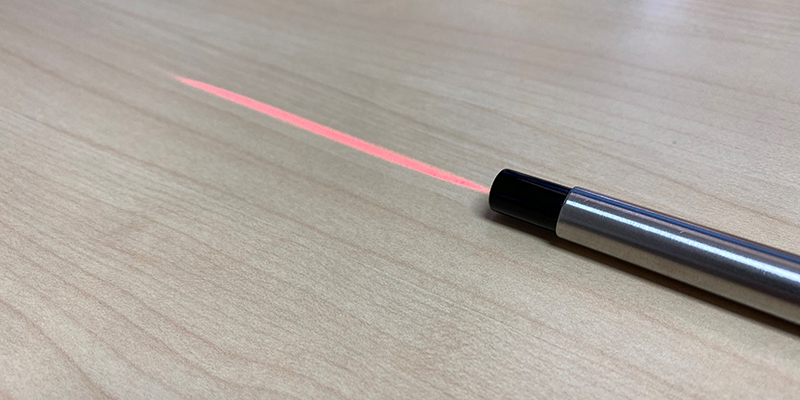Laser Safety
Laser pointers guidance

Laser pointers are widely available and have been used within the University as presentational aids for many years without any reported incidents.
-
Laser pointers that are class 1 or class 2 are relatively safe when used responsibly.
-
Laser pointers that are above this level, i.e. class 3R, 3B or 4 are not safe to use and in line with this Protocol, must not be used in the University.
Managing laser pointers in the University – please:
-
Check that the laser pointer is labelled with the laser class 1 or 2 and also has a CE mark (this may be in accompanying documentation).
-
Seriously consider if you need to use one at all. If you have one you don’t need or if it is of an uncertain class, think about disposing of it via the electronic waste route.
-
Only use class 1 or class 2 laser pointers and preferably with green (532nm) laser light.
-
Only buy laser pointers from reputable UK suppliers. Don’t buy them abroad or from non-UK websites or sources.
-
Laser pointers should only be used for their intended purpose and never shone at people, animals or vehicles.
-
Keep your laser pointer safe and in particular out of the hands of children.
-
If you have any concerns or are unsure about the safety of any laser pointer please contact the University Laser Safety Manager for more advice.
The problems with laser pointers
-
Laser pointers should be built to the accepted international standards (IEC 60825) and an indication of this would be presence of a CE mark. If they do not comply with the standards, they can have much higher power than is safe, and can also have incorrect or misleading labelling, i.e. many are labelled as class 2 when they are not!
-
This applies especially to laser pointers bought online from non-UK suppliers. Several laser pointers measured by Health and Safety Services have been found to have power levels of 10s of mW (the highest measured was 70mW), which makes them class 3B (even though labelled class 2). Even a brief glance at a laser beam of this power has the potential to cause retinal injury.
-
The human eye has a peak response at about 555nm (green light) which means that a green laser looks a lot brighter than a blue or red laser and the aversion response (looking away from a bright light) happens at a lower power level. The potential risk can therefore be lower for a green laser than for red or blue lasers.
-
Class 2 lasers can still cause eye injuries if they are misused, e.g. deliberate repeated exposures. Laser pointers in the hands of children can be dangerous, particularly if they are higher power than class 2 and there are concerns that the number of sight-threatening injuries to children from lasers is rising.
For help and support around lasers, please contact your Laser Safety Officer or the Laser Safety Manager. For details of these, see the Contact us webpage.
